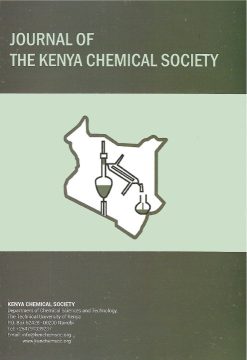Maxwell Obumba1, Naumih Noah2* and Mildred Nawiri1
1Chemistry Department, Kenyatta University, P.O Box 43844-00100, Nairobi
2School of Pharmacy and Health Sciences, United States International University-Africa, P.O Box 14634-00800, Nairobi
Abstract
Metal nanoparticles have been studied for their unique physical and chemical properties which make them efficient in various models and applications. Specifically, Silver nanoparticles (AgNPs) and Gold nanoparticles (AuNPs) have recognizable importance in chemistry, physics and biology because of their unique electrical, photothermal and optical properties. The size, surface chemistry, dispersion media and shape of AgNPs and AuNPs have a profound impact on their properties. The need to synthesize AgNPs and AuNPs with a predetermined size, shape and fair stability has been growing over the past and present decades. Several methods have been developed in the recent past, they include; chemical reduction, photochemical reduction, radio-lytic methods and electrochemical techniques. Most of these methods have shown success in the synthesis of AgNPs and AuNPs but their potential to provide smaller particle sizes and prevent agglomeration is still a major drawback. The use of polymeric materials as reducing agents and stabilizers is a promising method for obtaining monodispersed AgNPs and AuNPs with desirable stability. The current study demonstrates the feasibility of synthesizing small-sized AgNPs and AuNPs with better stability using nanostructured polyamic acid (PAA) as both reducing and stabilizing agent under the condition of room temperature. Polyamic acids are a class of polymer formed through polycondensation reactions between a dianhydride and a diamine. The amine and anhydride groups react to form carboxylic acid groups which release electrons in the reaction thereby reducing silver and gold ions. The carboxylic acid groups then encapsulate the newly formed AgNPs and AuNPs stopping their further growth and hence preventing them from agglomeration. Studies using UVVis spectrometry showed absorption spectra that correspond to the peaks of silver and gold nanoparticles. The bands in the region of 425nm to 433nm confirmed peaks for AgNPs while 533nm to 541nm confirmed peaks for AuNPs. The Mie’s equation depicted estimated particle sizes ranging between 26nm to 32nm and 24nm to 30nm for AgNPs and AuNPs respectively. The Surface Plasmon Resonance (SPR) bands remained unchanged over a period of beyond three months depicting better stability of the silver and gold nanoparticles. Therefore, it can be correctly concluded that PAA is a prominent reducing and stabilizing agent in the synthesis of stable AgNPs and AuNPs.
Keywords: Agglomeration, silver and gold nanoparticles, Polyamic acid, stability

